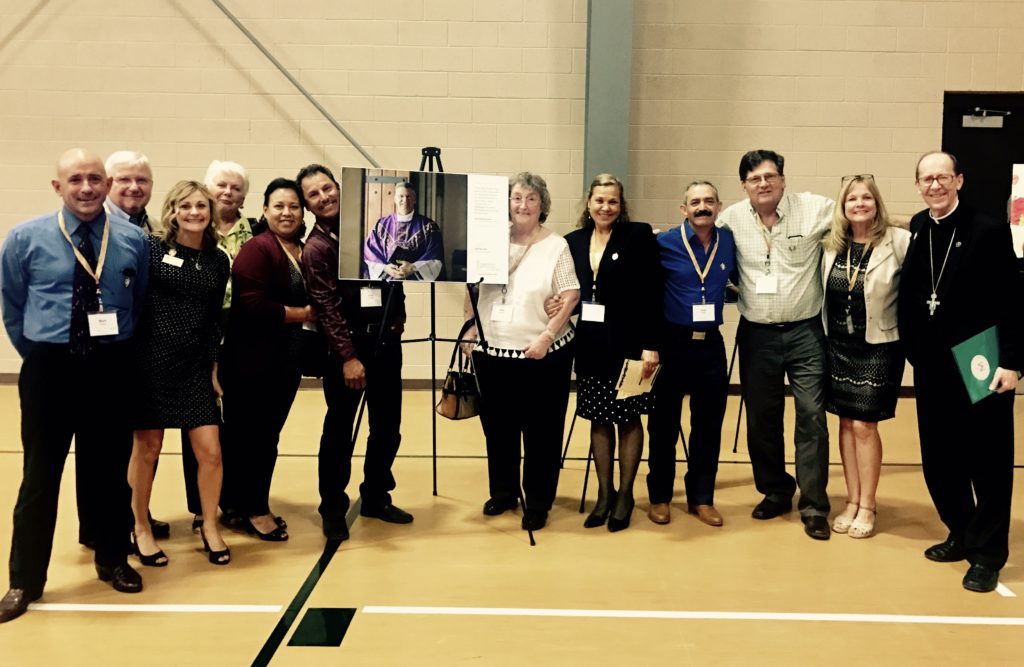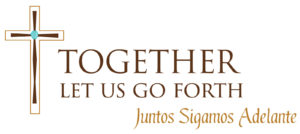
God sent the prophets, then John the Baptist and finally Jesus to prepare the way for something that was big, new and perhaps both scary and exciting.
Diocesan leaders had a similar mindset when launching the Campaign for Discipleship and Evangelization in September. They knew Catholics would appreciate having someone who could authentically prepare the way. So the Office of Mission Advancement, which is overseeing the campaign, held a trial run with what they call “pilot parishes.”
They drew pastors and laypeople — assembled as cabinet members — from six parishes into the process. Physically and spiritually, they embodied the campaign’s formal name: “Together Let Us Go Forth ~ Juntos Sigamos Adelante.” They journeyed together for six months discussing and discerning visions and needs at the parish and diocesan levels.
“We looked at our needs and we looked at what do we need in order for our Church to be fully alive,” Bishop Thomas J. Olmsted told The Catholic Sun.
The result was eight key focus areas. Most of them involve strengthening what already exists while also giving parishes and Catholics as a diocese the chance to see dreams fulfilled. Each focus area — direct parish support, seminarian support, ministry support, Newman Centers, Francis Mercy Fund and a specific trio of needs supporting Catholic education — will be addressed during the six-month block that the campaign reaches a given parish or mission in the Diocese of Phoenix.
Find your closest parish/mission in the Diocese of Phoenix
Mark Carlile, a parishioner at Immaculate Conception in Cottonwood was part of the parish campaign cabinet during its pilot phase and knows Catholics will have concerns when they first hear about the diocesan effort.
“I suggest people listen first to the presentation. Keep an open mind and pray on it and see what you’re being called to do rather than just react,” Carlile said.
Fr. Thaddeus McGuire, pastor at St. Daniel the Prophet in Scottsdale, which was also a pilot parish, had similar thoughts. It does appear ambitious at first, but the vision and plans for it are vital, he said.
Noting the mix of elements to the campaign, Fr. McGuire said the need for it is very apparent. “You can see the Holy Spirit’s fingerprints all over it,” he said.
He described the campaign’s inspiration using Pope St. John Paul II’s Ecclesia in America. That six-chapter exhortation describes encountering Jesus as the way to conversion, communion and solidarity. This new “Campaign for Evangelization and Disciple-making,” as he calls it, is a way to “put flesh on the bones of this document.”
Right now, there are 19 parishes and missions embracing the initiative. Every parish and mission gets to decide how to best spend 35 percent of what they raise for on-site needs. The other 65 percent gets spread among diocesan efforts.
Immaculate Conception is exploring installation of a Communion rail. St. Daniel would like to pay down a loan for its air conditioning and hire a third Carmelite missionary.
Numerically, the campaign’s $100 million goal is a high total, but logistically, it spreads out to $100 for every Catholic living in the ever-growing Diocese of Phoenix.
“People are always ready to give. It’s been really beautiful to see the overwhelming generosity of people who are so hungry to help the Church,” said Dominique Combs, one of six campaign managers who work directly with campaign cabinets at the parish level.
Several pilot parishes have already reached their goal — including one that had completed its own fundraising initiative in recent years and feared the faithful would be tapped out. That parish began paying down debt when funds kept coming in. Each parish has a unique goal based on tithing trends and dialogue with diocesan leaders.
 For some people, supporting the “Together Let Us Go Forth ~ Juntos Sigamos Adelante” effort will be a bit of a challenge. It’s not out of reach, however.
For some people, supporting the “Together Let Us Go Forth ~ Juntos Sigamos Adelante” effort will be a bit of a challenge. It’s not out of reach, however.
“When we start breaking down what this looks like and what we’re working toward, people want to join … because ultimately this is what we’re called to as Catholics,” said Kristin Smith, a campaign manager.
Cande de Leon, executive director of the Office of Mission Advancement, couldn’t agree more.
“When we’re called outside of our comfort zone … when we see other people who are generous and sacrificial, it inspires us to do our part, especially when it’s for helping the greater good,” de Leon said.
Tom Shellenberger, a parishioner at St. Mary’s Basilica, sees that vision too. The campaign, he said, has a broader vision of a stronger faith, especially at the crucial teenaged years.
“Christ is always calling us to rebuild his Church,” said Shellenberger, who served on the basilica’s campaign cabinet.
The “Together Let Us Go Forth ~ Juntos Sigamos Adelante” campaign is designed to do that physically and spiritually. Rebuilding efforts will be in vain if the faith isn’t properly handed down to today’s young Catholics, he said.
In the midst of the onslaught of an increasingly secular culture Shellenberger said the campaign’s focus on faith was key. “The next generation needs a faith stronger than ours,” he said.







